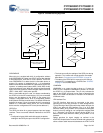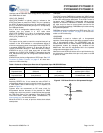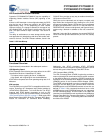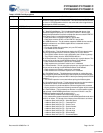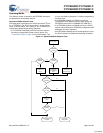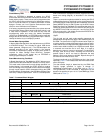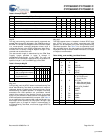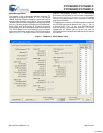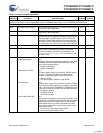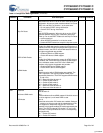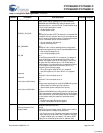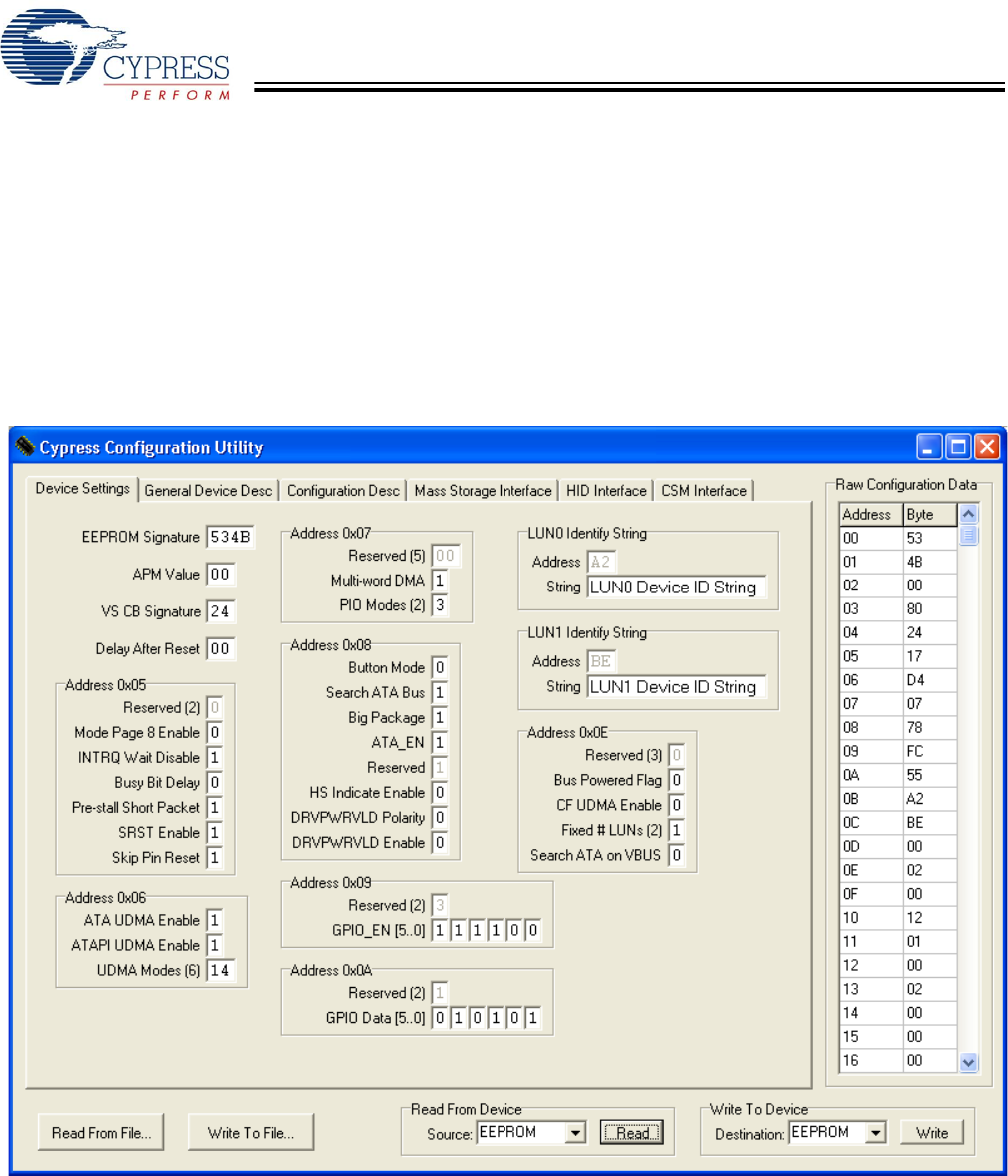
CY7C68300C/CY7C68301C
CY7C68320C/CY7C68321C
Document 001-05809 Rev. *A Page 21 of 42
EEPROM Organization
The contents of the recommended 256-byte (2048-bit) I
2
C
EEPROM are arranged as follows. In Table 11, the column
labeled ‘Required Contents’ contains the values that must be
used for proper operation of the AT2LP. The column labeled
‘Variable Contents’ contains suggested entries and values that
may vary (like string lengths) according to the EEPROM data.
Some values, such as the Vendor ID, Product ID and device
serial number, must be customized to meet USB compliance.
The ‘AT2LP Blaster’ tool in the CY4615C kit can be used to
edit and program these values into an AT2LP-based product
(refer to Figure 11). The ‘AT2LP Primer’ tool can be used to
program AT2LP-based products in a manufacturing
environment and provides for serial number randomization.
See “Board Manufacturing Test Mode” on page 19 for details
on how to use vendor-specific ATAPI commands to read and
program the EEPROM.
The address pins on the serial EEPROM must be set such that
the EEPROM is at physical address 2 (A0 = 0, A1 = 1, A2 = 0)
or address 4 (A0 = 0, A1 = 0, A2 = 1) for EEPROM devices
that are internally byte-addressed memories. It is recom-
mended that the address pins be set this way even on
EEPROMs that may indicate that the address pins are internal
no-connects.
Figure 11. Snapshot of ‘AT2LP Blaster’ Utility
[+] Feedback



